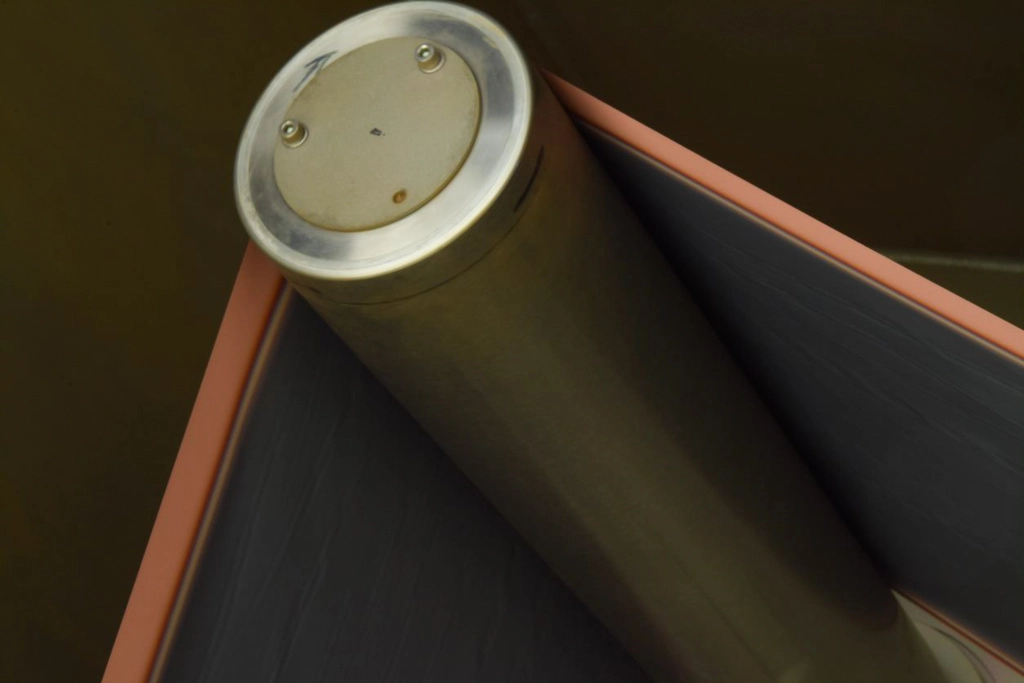LeydenJar anodes made of pure silicon
Break-proof silicon key to powerful and small batteries
LeydenJar creates the world’s most energy-dense anode foil made from break-proof silicon that mitigates frequent problems like swelling and breaking. Using LeydenJar anodes, technology companies can benefit from Li-ion batteries that are extremely powerful, small and fast charging.
LeydenJar creates the world’s most energy-dense anode foil made from break-proof silicon that mitigates frequent problems like swelling and breaking. Using LeydenJar anodes, technology companies can benefit from Li-ion batteries that are extremely powerful, small and fast charging.
How do LeydenJar anodes work?
1. How it works
LeydenJar developed a pure silicon anode with 70% higher energy density than traditional anodes. The unique and patented dry production process works with pure silicon. The result: anodes made of break-proof silicon and exceptional energy storage capabilities with significantly reduced volume and weight – up to 10x thinner.
LeydenJar developed a pure silicon anode with 70% higher energy density than traditional anodes. The unique and patented dry production process works with pure silicon. The result: anodes made of break-proof silicon and exceptional energy storage capabilities with significantly reduced volume and weight – up to 10x thinner.
What does break-proof silicon mean?
LeydenJar overcomes prevailing issues with the use of silicon
The use of silicon for anodes in a mechanically stable manner is challenging, as silicon swells during lithiation. Consequently, only a small percentage of modern anode composite materials contain silicon, enabling only small improvements in energy density.
LeydenJar’s innovative pure silicon anode is porous and flexible – like a sponge – effectively mitigating the problematic swelling of the silicon during lithiation. With the swelling issue eliminated, the full potential and capacity of silicon can be unleashed, while remaining mechanically stable.
How are LeydenJar anodes made?
2. How it’s made
The production of LeydenJar pure silicon anodes requires a unique production process: the PECVD process. Pure silicon columns are grown directly on the copper substrate with plasma vapour deposition (PECVD), an effective technology frequently used in the PV and semiconductor industry to grow thin films.
The sponge-like columns are porous and flexible, and lead to a high anode area loading, enabling energy density up to 1.350 Wh/l or 390 Wh/kg at lithiated stack level, while preventing breakage.
The PECVD process is scalable and affordable. Furthermore, it produces 85% less CO2 than existing anode production. LeydenJar anodes are produced in a single process step on a roll-to-roll PECVD machine, located in LeydenJar Eindhoven, the Netherlands.
The production of LeydenJar pure silicon anodes requires a unique production process: the PECVD process. Pure silicon columns are grown directly on the copper substrate with plasma vapour deposition (PECVD), an effective technology frequently used in the PV and semiconductor industry to grow thin films.
The sponge-like columns are porous and flexible, and lead to a high anode area loading, enabling energy density up to 1.350 Wh/l or 390 Wh/kg at lithiated stack level, while preventing breakage.
The PECVD process is scalable and affordable. Furthermore, it produces 85% less CO2 than existing anode production. LeydenJar anodes are produced in a single process step on a roll-to-roll PECVD machine, located in LeydenJar Eindhoven, the Netherlands.

Who uses LeydenJar silicon anodes?
3. How to use it
LeydenJar pure silicon anodes are used by technology companies and cell manufacturers in the battery industry. Our partners greatly value the energy leap that is achieved without any compromises on space, cost or footprint.
LeydenJar anodes are suitable for a wide range of formats, and they are compatible with off the shelve cathodes and electrolytes.
LeydenJar pure silicon anodes are used by technology companies and cell manufacturers in the battery industry. Our partners greatly value the energy leap that is achieved without any compromises on space, cost or footprint.
LeydenJar anodes are suitable for a wide range of formats, and they are compatible with off the shelve cathodes and electrolytes.
Background: Why does the industry long for silicon anodes?
Silicon’s potential unleashed – disrupting the anode industry
Anodes are the negative terminals of batteries, and are traditionally made of graphite. In current Li-ion battery cells, the graphite anode, making up about 50% of the volume of a cell, is the bottleneck in increasing the energy density. Besides the limited capacity of graphite, it is also a scarce and polluting material.
Silicon was discovered as a potential anode material with impressive energy storing capabilities and tenfold capacity to store lithium ions over graphite. In addition, a silicon anode makes up only 10% of the cell’s volume.
The production of silicon has an 85% reduced footprint due to its availability and green production process.
Many companies experiment with adding different amounts of silicon to anodes. The use of silicon is challenging as it swells and breaks easily when charged. Until now, anodes could only contain small amounts of silicon. LeydenJar discovered an entirely new process of creating 100% pure silicon anodes, building an extremely small, flexible, green, and – above all – energy-dense anode.